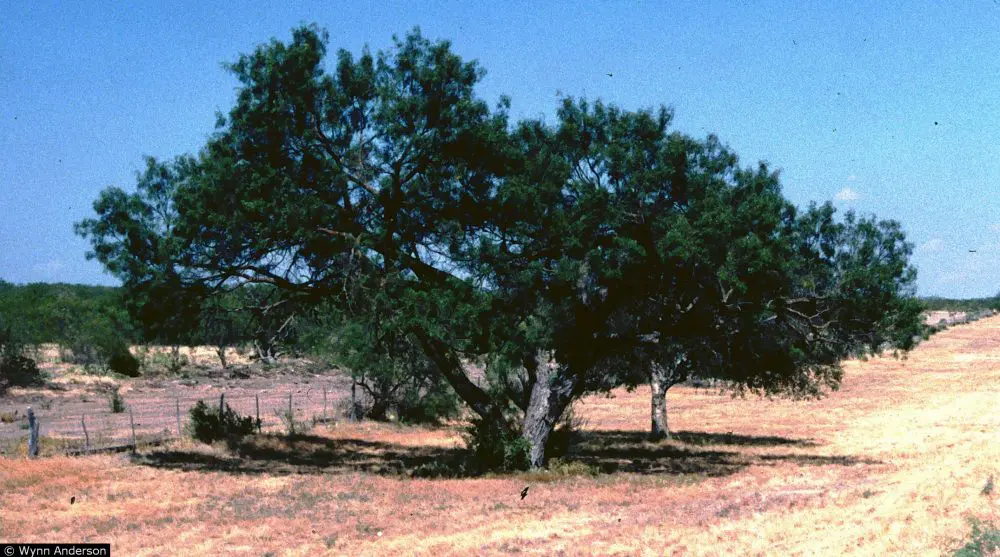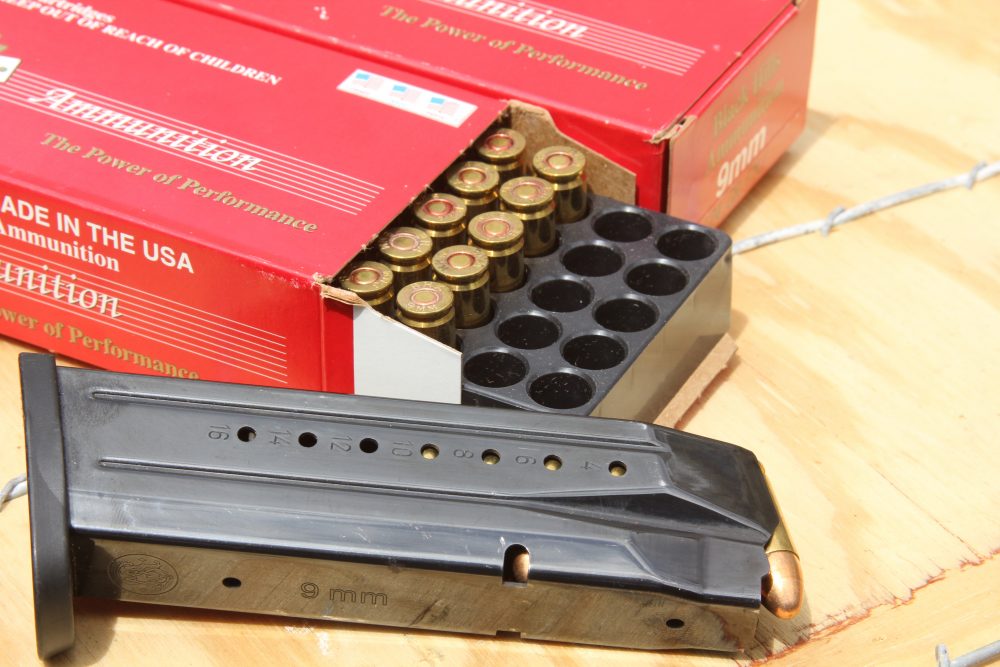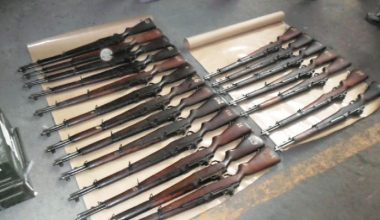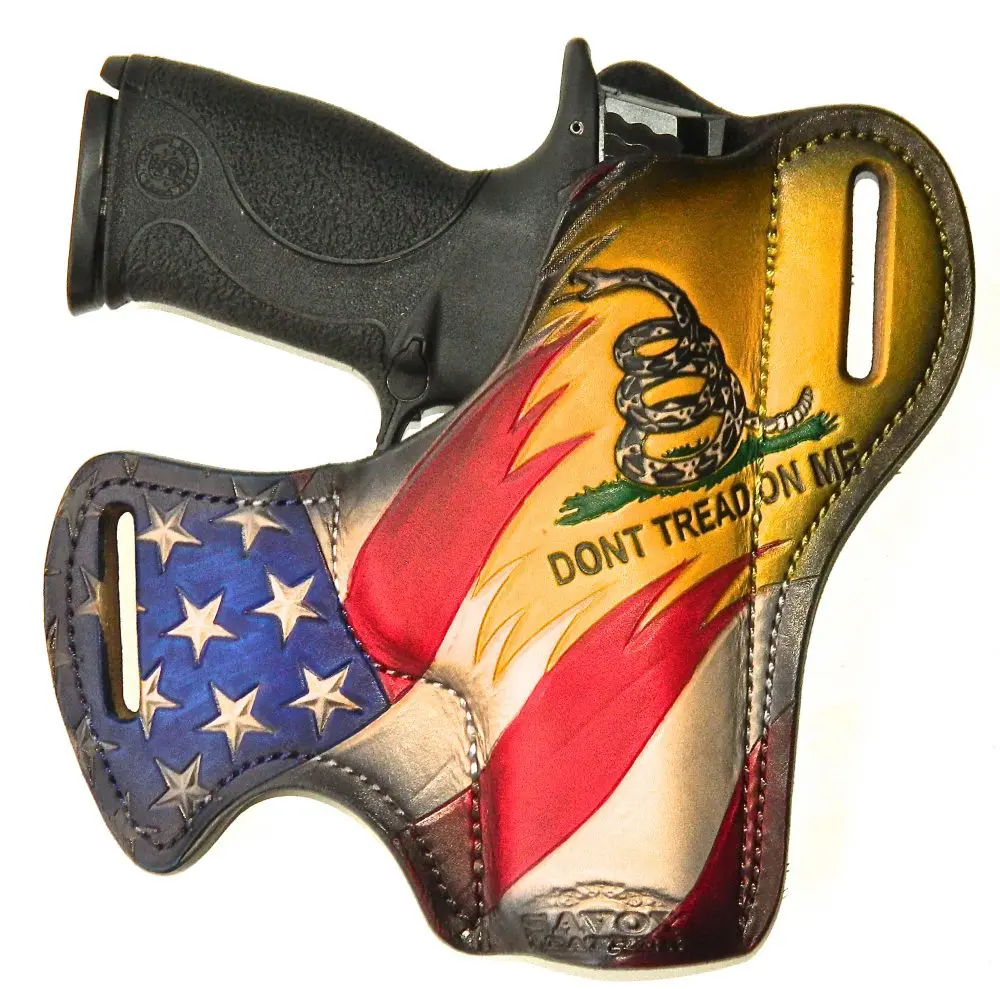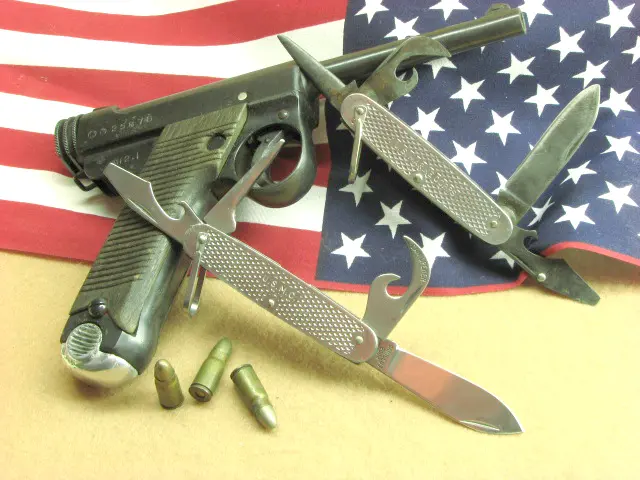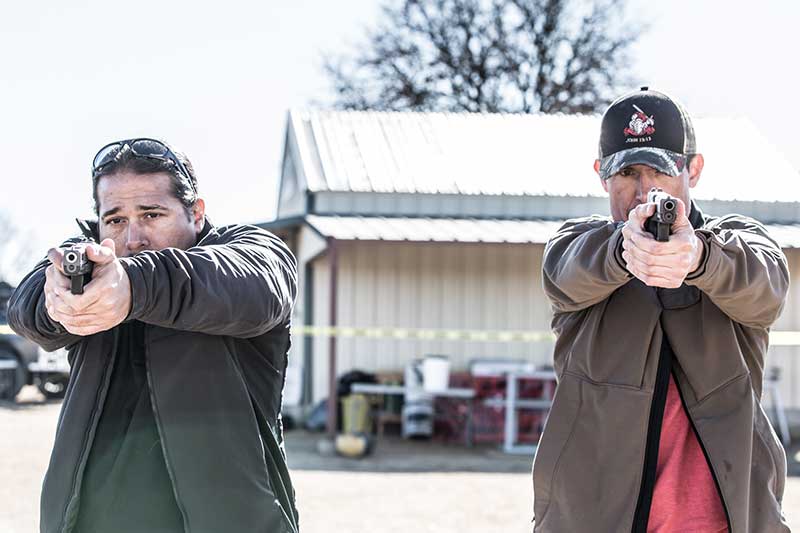
Many heroes grace the pages of S.W.A.T. Magazine. Sometimes they teach classes. Other times they stand side-by-side with us in classes—often with us none the wiser.
I was fortunate enough to attend a class taught by two heroes: Kris “Tanto” Paronto and Dave “Boone” Benton. Both men were part of the CIA Annex security team that responded to the terrorist attack on the U.S. Special Mission Compound in Benghazi, Libya and the subsequent defense of the Annex on September 11, 2012.
As part of a six-man protective team, they refused their supervisor’s orders to stand down and went against seemingly impossible odds to attempt to rescue Ambassador Chris Stevens and others at the Special Mission Compound. Shortly afterwards, they and a few others were responsible for defending the Annex against repeated fierce attacks in which two of their comrades were killed. These events are detailed in the book 13 Hours and were subsequently portrayed in a movie of the same title.
Kris’ background includes stints in a Ranger Battalion and security contracting in worldwide danger spots, while Dave’s background includes being a Marine Sniper and SWAT team officer and instructor as well as contracting for various government agencies.
Table of Contents
BATTLELINE TACTICAL
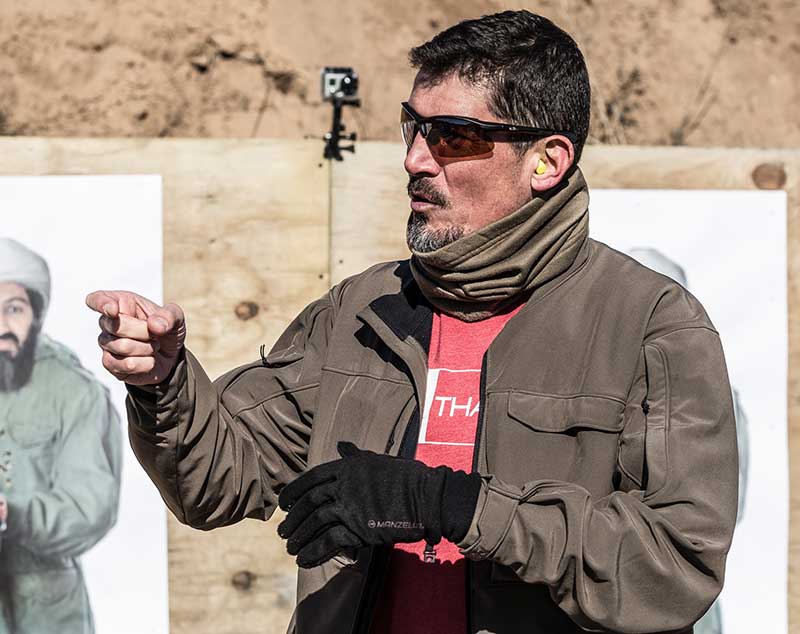
Both men are no strangers to firearms instruction. Together they have formed Battleline Tactical to impart their collective experience and knowledge to a variety of audiences. I believe mine was the fourth class that they taught to the private-citizen sector.
Through their exposure, and Tanto’s strong social media presence, they drew gun owners from all over the country to a class focused on employing a sidearm from concealed carry. The majority of the students had never attended any formal training outside of a basic familiarization class, and it showed in many ways.
Getting people to their first in-depth class is a huge achievement. But since this technically wasn’t a beginner’s class, it also presented some challenges. The instructors worked hard to try to address them.
The attendees represented the most diverse group of people I have ever seen in a training class. This included the age range, with some students in their 60s and 70s, and in the number of female shooters who participated.
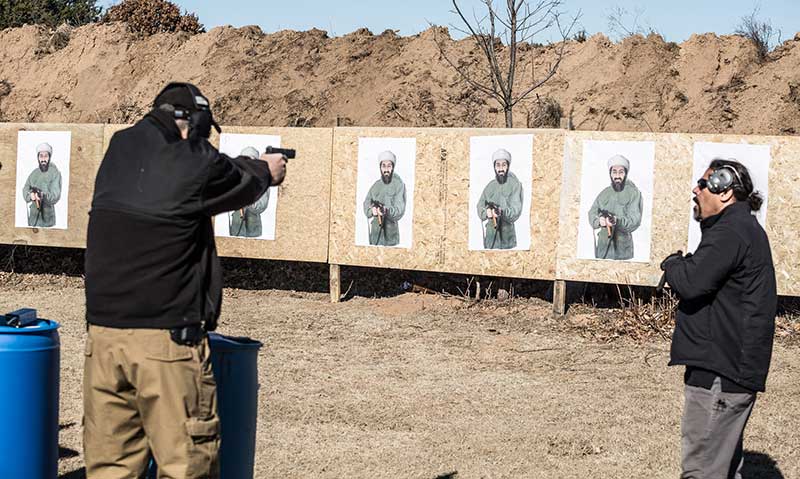
Of the 29 students, nine were women. Some ladies came on their own, others came with their spouses, and some came associated with the national women’s shooting league A Girl & a Gun. I saw ladies armed with everything from an economical Ruger automatic to a $2,900 Wilson EDC 9 (PREMIUM PRIMARY PISTOL: Wilson Combat EDC X9, November 2017 S.W.A.T.).
Some students shot the class with the small-size guns they carried—like an S&W Shield and a SIG 938. This runs counter to a trend often encountered in classes, where people bring larger, easier-to-shoot guns with a higher magazine capacity.
Two spots were made available without charge to officers from the Denton, Texas police department.
The class was held at the Alloy Arms Range in Whitesboro, Texas, 60 miles north of Dallas. It was put together by Larry Stevenson of 2nd Amendment Gun Safety and Training.
COLD-WEATHER TRAINING
Despite it being the coldest day of the year for Dallas, with temperatures dipping into the teens, the students were enthusiastic. Lectures took place in the heated Alloy Arms range house and classroom to provide a break from the elements.
Both instructors were non-dogmatic, easygoing, and emphatic that their way is not the only way, and that no student was locked into applying something Tanto and Boone taught if it did not work for them.
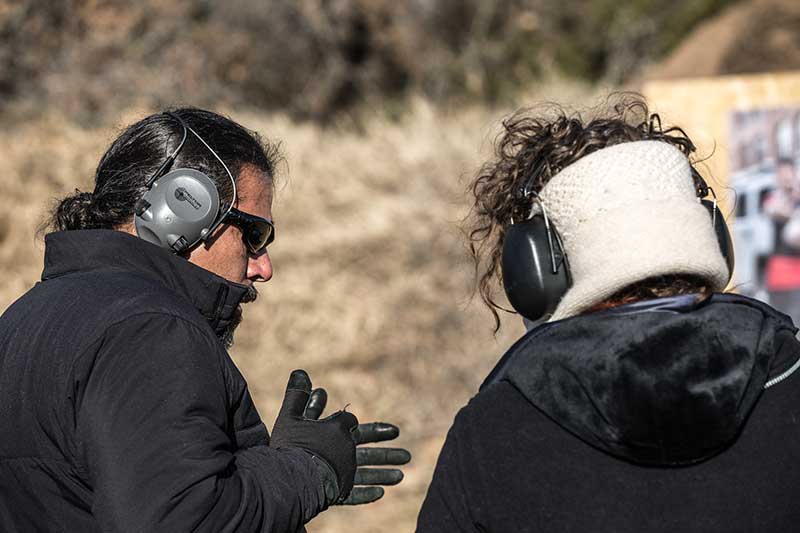
After the safety briefing, the instructors covered the four-point drawstroke with a modified isosceles stance. The goal of this drawstroke was to get the muzzle facing the target as soon as possible so the gun could be immediately fired from a retention position at an attacker inside of arm’s length or from a not fully extended position against a slightly farther attacker.
Tanto stressed that the first step of the drawstroke, which is establishing a good high grip on the back of the handgun while it is in the holster, is the single most important part. He emphasized that we should not draw until this grip is secured. When holstering the gun, we were instructed to reverse the steps of the drawstroke. This helps breed consistency, and if the situation radically changes, the gun can be re-extended and fired.
Boone covered several modes of concealed carry—including appendix inside the waistband—and demonstrated in detail clearing cover and drawing from each technique, using both one and two hands.
Boone provided an overview of the three elements of an attacker that must be present to justify the legal use of deadly force: ability, opportunity, and jeopardy. He stressed that people need to investigate their local laws more deeply, since some states’ laws vary.
The instructors delivered a lecture on mindset and awareness, incorporating the late Col. Jeff Cooper’s color codes. They brought a lot of awareness about threat recognition and pre-attack indicators from their overseas experience and explained how students can incorporate this into their daily lives.
DRAWING FROM CONCEALMENT
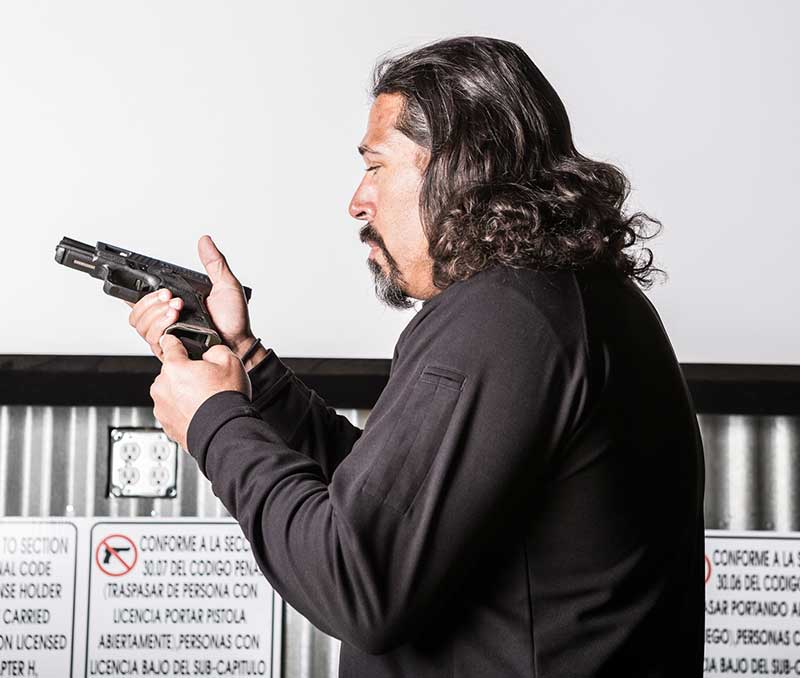
Since this was a concealed carry class, almost all shooting was preceded by a draw from concealment. This is something in which most people don’t receive enough training or practice. Executing repeated draws in the sub-20 degree cold from under layers of clothing proved to be a challenge. Some students made compromises in how they carried their guns so they would only have to deal with the top layer of concealment.
The cold temperatures also meant that many class members wore gloves, though they were not accustomed to wearing gloves while manipulating or firing their handgun. This negatively affected their performance.
Drawing—especially drawing from concealment—adds the whole process of clearing your concealment garment, getting a proper grip on the gun, presenting it from the holster into a solid hold, and aligning the sights.
It also adds a sense of urgency, increasing the likelihood of jerking the trigger, firing before the sights are aligned, or shooting with a poor grip. It’s much more difficult than shooting a gun that is already out.
If you don’t have basic marksmanship skills down, your accuracy will definitely suffer. The hits on target reflected the fact that most of the students had never taken a class.
SHOOTING RELAYS

The students were divided into two relays. The shooting portion started at five yards with students firing ten rounds at photo-realistic silhouette targets with instructions to pick a specific spot and concentrate on putting rounds there. This helped the instructors gauge the class’ skill level.
While there are no scoring rings or defined target areas in real life, in this case they would have been helpful by giving students a more precise aiming point and making it easier to build their marksmanship.
Throughout the class, the instructors worked on basic shooting skills by making general suggestions to the class and working with individuals as time permitted. They also had the help of the range owner and the person who organized the class, who walked the line and assisted students with the basics.
From there the instructors built the drawstroke, with directions for the students to go slowly. As the pace picked up, so did the number of rounds fired after the gun was drawn, increasing from one to two to three. Next the failure drill was introduced—where two shots were fired to the chest followed by a shot to the head in case an attacker did not respond to the first two shots.
REVIEWS AND CORRECTIONS
As the class progressed, the instructors covered reloads. One important point they stressed was having the gun held in your workspace in front of your face with the muzzle pointed downrange, and pinning your elbows of the loading arm and gun arm to your ribcage. This elbow position provides consistency and allows steadier reloads, even if you are moving.
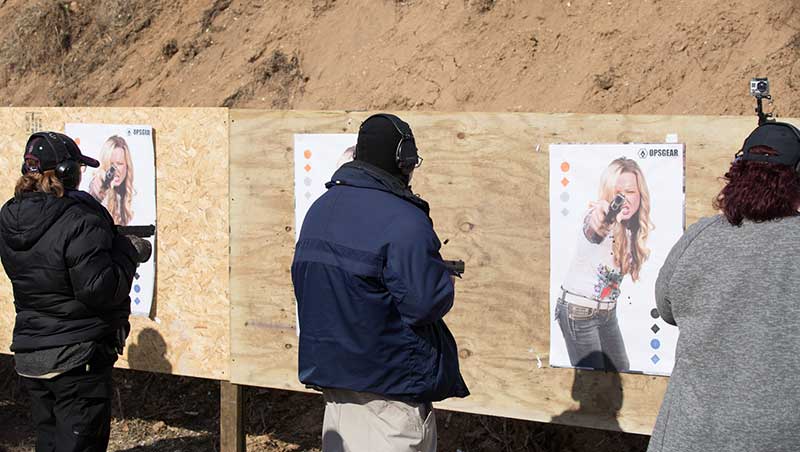
After noticing some marksmanship problems, Boone pointed out the value of a tight two-handed hold, which helped mitigate some issues, such as a bad trigger pull.
Boone and Tanto provided impromptu reviews in the form of verbal quizzes throughout the class. They quizzed the students on material including mindset and the legalities of deadly force.
The second day of class was a bit warmer than the first, and much of the material covered was reviewed. We moved on to practice one-handed garment clearing and shooting, as well as engaging close-in targets from a compressed two-hand position as well as a one-hand retention position.
Throughout the two days of the class, additional material was added regarding marksmanship. This helped prevent new shooters from getting overwhelmed with too much information at once. More emphasis was placed on trigger control and trigger issues.
Tanto gave a great illustration and explanation of pulling the trigger straight back: You want the portion of your finger that pulls the trigger to be at a 90-degree angle to the gun when the trigger completes its rearward movement after the shot breaks.
CHALLENGES WITH NEW SHOOTERS
Most of Boone and Tanto’s professional teaching experience has been with more seasoned shooters, and often GSA and military contractors. In this class, they found themselves teaching many people totally new to formal training and in much harsher weather than most students were accustomed to.
If I had any criticism of the class, it would be that I didn’t see as much improvement in the level of shooting of some students as I should have. I would have preferred to see the primary instructors spend more time on marksmanship at the beginning of the class at the expense of time spent on drawing from concealment.
Nevertheless, the most rewarding aspect of this class was seeing the level of enthusiasm, enjoyment and appreciation of the first-time students. You generally don’t see that with people who are at their eighth or ninth firearms class.
Boone and Tanto definitely imparted necessary knowledge and left the students educated, impressed, and enthusiastic. And enthusiasm makes people more inclined to practice their new-found skills and seek out further instruction—something that could benefit most gun owners.
SOURCES
BATTLELINE TACTICAL
www.kristantoparonto.com/events
ALLOY ARMS
(903) 209-8388
www.alloyarms.com
A GIRL & A GUN
www.agirlandagun.org

